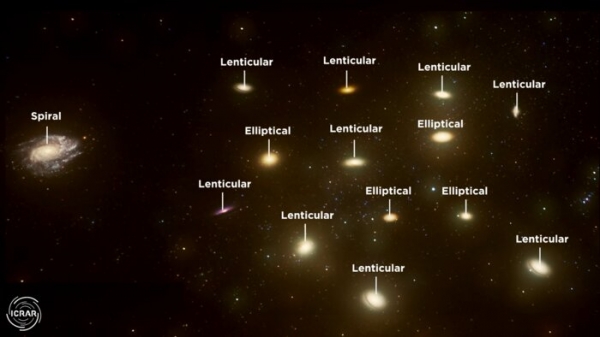Researchers may have answered a decades-old question about galaxy evolution, leveraging the power of artificial intelligence (AI) to accelerate their research.
Ever since the Hubble Sequence, that classifies galaxy morphologies, was invented in 1926, astronomers have been refining our understanding of galaxy evolution and morphology as our technology advances.
By the 1970’s, researchers had confirmed that lone galaxies tend to be spiral-shaped, and those found in clusters of galaxies were likely to be smooth and featureless, known as elliptical and lenticular (shaped like a lens).
Published today in the journal Monthly Notices of the Royal Astronomical Society, new research led by astronomers at the International Centre for Radio Astronomy Research (ICRAR) may have uncovered the reason for these differences in shapes.
Read more at International Centre for Radio Astronomy Research
Image: A representation of how the EAGLES program classifies galaxy as assessed by AI. (Credit: ICRAR)


